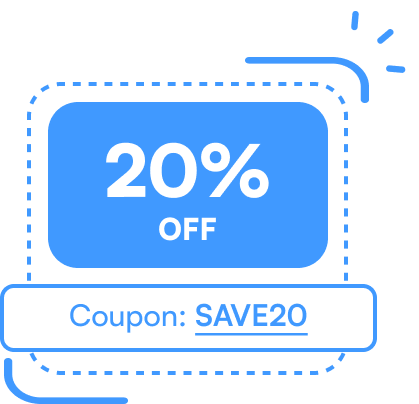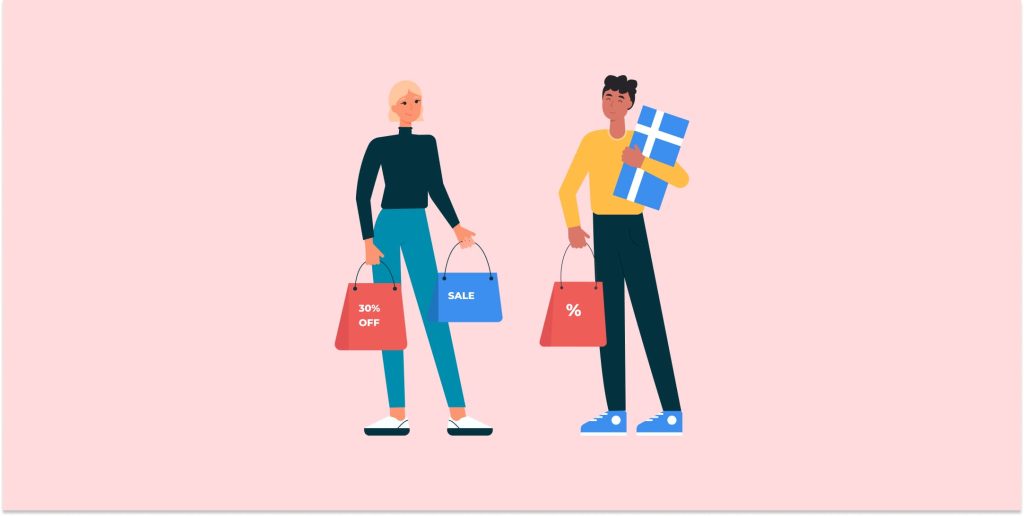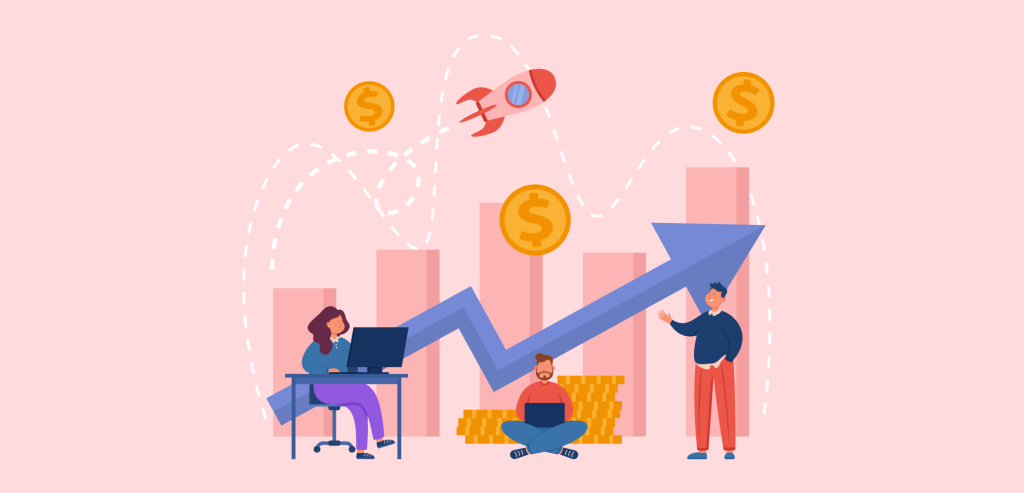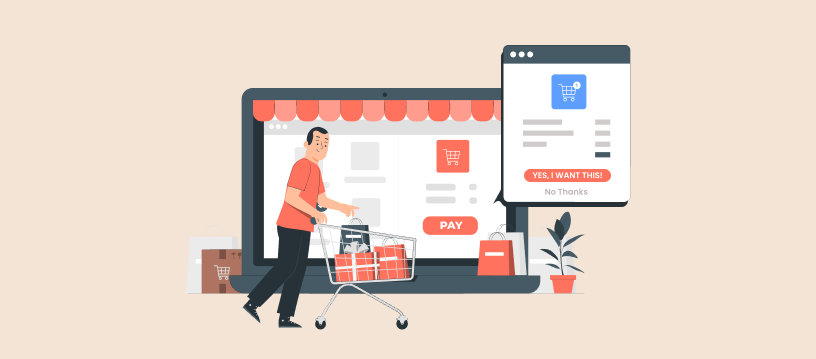Have you ever grabbed an extra item because the sign says “Buy One, Get One Free”? If so, you’re already familiar with the power of a BOGO sale! But how does a BOGO sale work so effectively at attracting customers and boosting sales?
Whether you’re an experienced online seller or just starting, understanding how to leverage Buy One, Get One (BOGO) deals can transform your sales strategy in 2025. In this ultimate guide, we’ll dive into everything you need to know about BOGO sales—from the psychology behind the deal to tips for running your successful promotion. Also, you’ll learn the detailed steps to create the BOGO deal for your store.
Generate more revenue from each customer via BOGO deals and increase the Average Order Value using Discount Rules for WooCommerce PRO.
What is a BOGO Sale?
A BOGO sale stands for “Buy One, Get One,” and it’s one of the most popular sales tactics used in both physical and online stores. Essentially, it allows customers to receive an additional product at no extra cost or at a discounted price when they purchase one product. This encourages customers to buy more than they originally intended, helping you increase average order value (AOV) and boost your overall sales.
In a BOGO sale, the “free” or discounted item could be anything—from the same product they’ve already purchased to a completely different item. The versatility of BOGO deals makes them an incredibly attractive and flexible BOGO marketing strategy.
Example of a BOGO Offer
Imagine a customer purchases a t-shirt for $20. In a BOGO sale, they might receive another t-shirt for free BOGOF (Buy One, Get One Free or One), or they might pay a discounted price, such as $10 for the second t-shirt (BOGO Discount). This kind of offer encourages customers to buy more, often leading to a higher cart value.
Types of BOGO Sales
BOGO sales can be structured in different ways, depending on what you want to offer your customers. Here are the two most common types:
A) Buy One Get One Free (BOGOF)
This is the classic BOGO deal—customers buy one item and get another identical or similar item for free. This is a highly attractive offer because of the perceived value customers receive.
Example: “Buy 1 T-shirt, Get 1 Free!”
This type of offer can quickly boost sales and clear out inventory, especially for slower-moving products. Also, the free product might be the same “Buy” product (T-shirt) or a different product (Buy a T-shirt and Get a Free Cap).
B) Buy One, Get One at a Discount (BOGO Discount)
In this version of a BOGO sale, customers buy one product and receive another at a discount. This is a less extreme offer than BOGOF, but still a compelling deal for customers.
Example: “Buy 1 T-shirt, Get 1 at 50% Off!”
Buy One and Get One Half-Off deals are great if you want to encourage customers to buy more without giving away as much margin. You can adjust the discount to suit your business’s profitability.
c) Combining BOGO Sale with Other Promotions
Another powerful option is to combine BOGO with other promotions, such as free shipping or exclusive discounts for members. This creates a compound effect, leading to even higher conversion rates.
D) Increasing Buying Count
Instead of the regular “Buy One Get One” offer, you can also increase the buying and get quantities depending on your stock level. For example: “Buy Two Get One Free,” “Buy Three Get Two At 50% Off,” and so on.
The Psychology Behind the BOGO deal
The BOGO (Buy One, Get One) deal taps into several psychological principles. It creates a sense of getting more value by framing the second item as “free,” which triggers feelings of a bargain.
The fear of missing out (FOMO) and urgency encourage quick purchases, while the concept of reciprocity makes consumers feel compelled to act when they perceive extra value.
The deal also plays on the sunk cost fallacy, where consumers feel they need to buy more to “justify” the first purchase.
Overall, BOGO deals capitalize on our desire for savings, social influence, and emotional triggers, driving impulse buying.
Why are BOGOs so Effective?
BOGO sales are incredibly effective for store owners for several reasons. Let’s take a look at some of the key benefits:
1. Boost Average Order Value (AOV)
By encouraging customers to purchase additional products at a discount or for free, BOGO sales help increase your store’s AOV. This means you’re making more revenue per transaction, which can have a significant impact on your store’s profitability.
2. Inventory Management
BOGO offers are a great way to manage your inventory and clear out slow-moving stock. If you have excess stock of certain products, running a BOGO sale can help you move that inventory quickly without losing money.
3. Attract More Customers
Who doesn’t love a good deal? A well-structured BOGO sale can attract a wide range of customers, including those who might not have considered your store otherwise. The allure of “free” or “discounted” items often leads to increased traffic and conversions.
4. Customer Retention
When customers feel they’re getting more for their money, it increases the likelihood of repeat purchases. BOGO sales create a sense of urgency and value that can drive customers to purchase more frequently. Plus, the excitement of “getting something for free” builds positive associations with your brand, encouraging loyalty.
5. Creating Urgency and FOMO
BOGO sales are often used in limited-time offers, which helps create a sense of urgency and FOMO (Fear of Missing Out). When customers see a time-sensitive deal, they are more likely to make a purchase sooner rather than later.
How to Run a Successful BOGO Sale?
Running a BOGO sale is straightforward, especially if you use the right strategies. Here’s how to run a successful BOGO sale:
Step 1: Plan Your Offer
Before diving into your deal setup, you need to plan the specifics of your BOGO sale. Here are some key decisions to make:
- What products will be part of the sale? You can either apply BOGO to specific products or offer it store-wide. Consider which products are the best fit for a BOGO promotion—items with high margins, slow-moving inventory, or complementary products are ideal.
- What type of offer will you provide? Will it be “Buy One, Get One Free?” Or “Buy One, Get One at 50% off?” Choose an offer that aligns with your store’s goals.
- Will it be limited-time or ongoing? Limited-time offers work better for creating urgency, but if you’re running a long-term promotion, ensure that customers still feel incentivized to act quickly.
- Do you want to set a minimum purchase requirement? For instance, “Buy 2 Get 1 Free” or “Spend $50, Get a Free Gift” can encourage higher spenders to take part.
Step 2: Use the Right Platform and Plugin
Since you’re learning about BOGO sales, you already have an online store. Choose the best plugin or tool or utilize built-in platform features to set up your BOGO deals.
For example, if you built your store on a WooCommerce platform, you have to use a plugin like “Discount Rules for WooCommerce -Pro” to create BOGO offers, and you need a different plugin if you are a Shopify store owner. Similarly, it differs for a Wix or Squarespace store owner; manually code the setup.
How to Set Up a BOGO Sale in WooCommerce?
If you are a WooCommerce store, I’ve already explained the detailed steps to create “BOGO” deals in 7 different types.
Check this “How to Create WooCommerce BOGO (Buy One Get One) Deals?” blog for more BOGO ideas specific to the WooCommerce platform.
Step 3: Configure the Sale
Once you’ve installed the plugin or enabled the platform feature, you can start configuring your BOGO sale. The exact steps will vary depending on the plugin, but in general, you’ll want to:
- Select the products or categories you want to apply the offer to.
- Define the terms of your offer, such as Buy One, Get One Free, Buy One, Get One at a Discount, or Buy One, Get One for a Fixed Price.
- Set any limits on the number of offers available (e.g., only one BOGO offer per customer).
- Apply any additional restrictions like minimum purchase amounts, specific dates, or specific user groups.
Step 4: Promote Your BOGO Sale
A BOGO sale won’t be effective unless customers know about it. Here are some effective ways to promote your BOGO offer:
- Use email marketing: Notify your existing customers through email about the BOGO sale. Make sure your subject line emphasizes the deal—something like “Hurry! Buy One, Get One Free on Select Products!”
- Announce it on social media: Use your store’s social media accounts (Facebook, Instagram, Twitter, etc.) to spread the word. Create eye-catching posts.
- Add banners to your website: Place prominent banners on your homepage, product pages, and checkout pages to remind visitors about the BOGO deal.
- Use paid ads: If you want to reach a broader audience, consider using Google Ads or Facebook Ads to promote your BOGO sale.
Step 5: Monitor and Optimize Your Sale
Once your BOGO sale is live, it’s important to monitor its performance.
Key Metrics to Measure the Performance of BOGO Sales
When running BOGO (Buy One, Get One) sales, measuring performance is crucial to understanding their effectiveness and making data-driven decisions for future promotions.
Here are key metrics to track during and after a BOGO sale:
1. Sales Revenue
- Total Revenue: Track the total revenue generated during the promotion period. Even though customers get one free item, revenue from the second item can still provide valuable insight.
- Revenue per Transaction: Measure how much money is spent per transaction compared to normal (non-promotional) periods. This shows if the BOGO sale is driving customers to buy more than they typically would.
2. Units Sold
- Total Units Sold: Track the number of units sold during the promotion. Compare this with a baseline of normal sales (pre-BOGO) to see if the promotion is increasing sales volume.
- Volume per Customer: Measure how many products each customer buys, helping to determine if the promotion is leading to larger transactions or increased purchases.
3. Customer Acquisition & Retention
- New Customers Acquired: Track how many new customers were brought in through the promotion. BOGO sales can attract first-time buyers who might become loyal customers.
- Repeat Purchases/Customer Retention: Measure how many customers return after the promotion ends, indicating the effectiveness of the BOGO sale in building loyalty.
4. Profit Margin
- Gross Profit Margin: Since customers are getting one item for free, it’s essential to calculate the profit margin. Make sure the BOGO promotion does not erode your overall profit too much. This is especially important if the products being sold at a discount have low margins.
- Net Profit: After factoring in any discounts, free items, and operational costs, determine the overall profitability of the sale.
5. Average Order Value (AOV)
Track how much customers are spending on average during the BOGO sale compared to non-promotional periods. An increase in AOV can signal the promotion’s success in encouraging customers to buy more.
6. Discount Redemption Rate
Tracks how often customers use the BOGO offer. If only a small percentage of customers use the offer, it may indicate poor promotion visibility, unclear terms, or lack of interest.
7. Conversion Rate
Measure how well the BOGO offer converts visitors (online or in-store) into buyers. A successful promotion should result in a higher conversion rate during the campaign period.
8. Inventory Impact
- Stock Turnover Rate: The BOGO sale can lead to quick inventory turnover. Track how quickly your stock is selling and whether any specific products are in high demand.
- Out-of-Stock Items: Monitor if certain items sell out too quickly, indicating you might need to adjust your inventory strategy for future promotions.
9. Customer Engagement and Feedback
- Customer Sentiment: Collect and analyze feedback through surveys, reviews, or social media to understand how customers feel about the promotion. Positive sentiment could translate into future purchases, while negative sentiment might highlight areas for improvement.
- Social Media Mentions: Track mentions of your promotion on social media to gauge the level of buzz or excitement around the sale.
10. Cost of Goods Sold (COGS)
Since the promotion often involves giving away free items, it’s important to track the direct costs related to the goods sold during the promotion, which can affect your bottom line.
11. Sales Growth vs. Baseline
- Sales Growth: Compare the sales performance during the BOGO sale to the sales for the same period in the previous year or a similar time frame. This gives you an idea of whether the promotion is driving significant sales growth.
- Year-over-Year Growth: If you’ve run similar promotions in the past, track the growth or decline in sales compared to previous BOGO sales, as this can help assess long-term effectiveness.
12. Customer Lifetime Value (CLTV) Acquired via BOGO:
Determine how the BOGO sale influences the long-term value of customers who purchase during the promotion. If the promotion brings in customers who make repeat purchases, CLTV can show significant growth.
13. Time to Redeem
If the BOGO offer is limited by time (e.g., expires after a week), track how quickly customers are redeeming the promotion. A short time frame may create a sense of urgency that increases conversions.
14. Website Traffic (for Online Stores)
- Website Traffic: If the sale is online, track the increase in traffic during the promotion period. An effective promotion should attract a noticeable spike in visitors.
- Bounce Rate: Monitor whether the increased traffic translates to actual sales. A high bounce rate could indicate that visitors are interested but are not completing their purchase.
By tracking these key metrics, you can get a clear picture of the effectiveness of your BOGO promotion and determine whether it’s generating the desired results.
You can also experiment with different BOGO strategies (e.g., limited-time offers vs. ongoing promotions) to see which one works best for your audience.
Use A/B testing to refine your promotion further. This data will help refine future sales strategies and optimize the customer experience.
Related Read: 9 Best WooCommerce Buy One Get One Free Plugins
Best Practices for Running a Profitable BOGO Sale
Running a BOGO sale can be incredibly effective if done right. Here are some best practices to ensure your BOGO sales are a success:
1. Timing Your Sale
Choose the right time for your BOGO sale to maximize its effectiveness. This could be during major shopping events like Black Friday, Cyber Monday, or the holiday season. You can also use BOGO sales to clear out excess inventory after a product launch or seasonal promotion.
2. Segment Your Audience
Target your BOGO sale to specific segments of your customer base. For example, you can offer exclusive BOGO deals to loyal customers or first-time buyers. This personalized approach increases the likelihood of conversions
3. Targeting the Right Products
Make sure to target products that will make sense for a BOGO sale. You can offer BOGO deals on complementary products, such as accessories or bundles, which can increase overall sales. Avoid running BOGO sales on high-ticket items unless you’re confident in your margins.
4. Setting Clear Rules
Customers should clearly understand the terms of the BOGO deal. For example, if the second product is discounted or free, make sure the terms are easy to find and understand on your site. Transparency is key to building trust with customers.
Set BOGO deals only to specific products or categories using the Discount Rules for WooCommerce PRO plugin.
5. Promoting Your Sale
Don’t just rely on your website to attract customers—use email marketing, social media, and Google Ads to promote your BOGO sale. You can also use banners and pop-ups on your website to grab visitors’ attention and drive conversions.
6. Upsell and Cross-sell
When setting up your BOGO sale, use cross-sells and upsells to recommend complementary items. If someone buys a shirt, you can recommend a pair of pants or accessories that go with the shirt. This increases the chances that customers will take advantage of the BOGO deal.
7. Create Time-Limited Offers
Adding a countdown timer to your BOGO sale can create urgency, motivating customers to act quickly. Use a plugin like WooCommerce Countdown Timer to display the time left for the sale to end.
8. Ensure Stock Availability
BOGO sales can lead to a spike in demand, so make sure you have enough stock available to fulfill orders. If you run out of stock, it can negatively impact customer experience and sales.
Real-Life BOGO Deal Examples
Here are examples of BOGO food deals from popular chains like Subway, Starbucks, and McDonald’s:
1. Subway
Subway often runs limited-time BOGO promotions where customers can buy a sub and get another one for free or at a discounted price.
For example: Buy One, Get One Free: Customers who purchase a regular-priced sandwich could get a second sub free, typically offered within a specific time.
2. Starbucks
BOGO Coffee and Drinks Promotions – Starbucks frequently runs “Buy One Get One Free” promotions on drinks, especially around holidays or in celebration of new product releases.
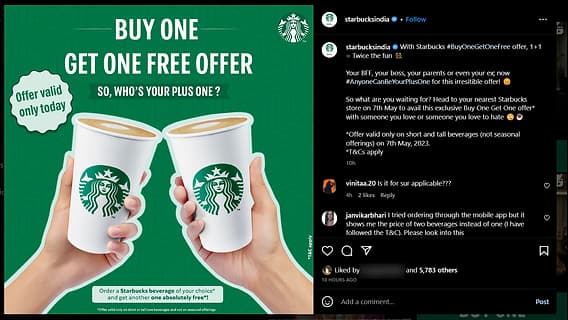
3. McDonald’s
BOGO Meal Deals – McDonald’s runs various BOGO promotions, especially through their mobile app or during special offers.
For example, Buy One, Get One for $1: McDonald’s may offer deals where you buy one burger or meal at a regular price and get another one for just $1, which is essentially a BOGO with a minimal charge on the second item.
Clear out excess or slow-moving stock via BOGO deals using the Discount Rules for WooCommerce PRO plugin.
Conclusion: Boost Your Sales with BOGO Offers
A BOGO sale is a powerful way to increase sales, clear out inventory, and attract new customers to your WooCommerce store. By offering customers the chance to buy more at a discounted price or for free, you’re not only driving conversions but also building a loyal customer base.
To make the process even easier, use plugins like Discount Rules for WooCommerce Pro (if you have a WooCommerce store), which can automate your BOGO offers and make your promotions more efficient. So, what are you waiting for? Start planning your next BOGO sale and watch your revenue thrive.
Also Read:
- How to Create a WooCommerce Bulk Discount? (Quick Steps + Examples)
- How to Create a WooCommerce Buy X Get Y Offer? (3 Ways)
Frequently Asked Question
No, BOGO sales can work for both physical and digital products. Many online stores use BOGO sales for downloadable products like eBooks or software licenses.
While BOGO sales are highly effective, they should not be run too frequently. Overuse can make customers expect discounts all the time. Aim to run BOGO promotions at key times, such as during seasonal sales or special events.
Yes, it is possible to create BOGO discounts for specific customers depending on the platform you use.
For instance, the “Discount Rules for WooCommerce Pro” plugin can help WooCommerce store owners offer BOGO deals to specific customers or customer groups, such as first-time buyers, VIP customers, or members of a loyalty program.
BOGO sales are not only about immediate sales but also about fostering customer loyalty. When customers feel like they’re getting a good deal, they are more likely to return for future purchases. Offering these sales regularly, combined with a strong loyalty program, can increase your customer lifetime value (CLV).
No, BOGO (Buy One, Get One) doesn’t always mean free. It can refer to various types of promotions, such as:
-Buy One, Get One Free (BOGOF): You get the second item for free.
-Buy One, Get One at a Discount: You pay a reduced price for the second item.
-Buy One, Get One for a Fixed Price: The second item is offered at a set price (e.g., $5).
So, BOGO promotions can vary depending on the specific offer.
While Buy One, Get One Free (BOGOF) promotions can be highly effective for boosting sales, there are some potential disadvantages to consider:
1. Reduced Profit Margins: Offering products for free can significantly lower your profit margins, especially if you’re giving away high-cost items. This could hurt your overall profitability if not managed carefully.
2. Decreased PerceiveValued: Frequent BOGO offers might make customers expect discounts all the time, potentially lowering the perceived value of your products. They may wait for future sales rather than purchasing at full price.
3. Inventory Strain: BOGO promotions can lead to a surge in sales, but if you’re not careful, you could end up depleting your inventory too quickly, leaving you unable to meet demand or fulfill future orders.
4. Customer Overload: Offering too many BOGO deals can confuse or overwhelm customers. Some may feel pressured to buy more than they need, leading to dissatisfaction or buyer’s remorse.
5. Short-Term Focus: BOGO offers might bring in immediate sales, but they may not build long-term customer loyalty or sustainable growth. Customers may only buy during sales and not return unless another promotion is offered.
6.Impact on Brand Image: If used too frequently or without clear justification, BOGO offers can harm your brand’s image by making it appear “discount-driven” or less premium, which could deter certain customers.
While BOGO sales are a great tool when used strategically, these disadvantages should be considered in order to balance short-term gains with long-term business health.
BOGO (Buy One, Get One) promotions are generally not considered price discrimination in the strict sense, but they do have some similarities to price discrimination in certain contexts.
Let’s break this down:
Price Discrimination vs. BOGO
Price discrimination occurs when a seller charges different prices to different customers for the same product or service based on factors like customer segment, location, or purchasing power. For example, charging different prices to students, senior citizens, or people in different geographic regions.
BOGO deals, on the other hand, are a form of sales promotion where the price is the same for all customers, but the offer gives them more for the same price or a discount on the second item. Essentially, every customer who takes advantage of the promotion gets the same deal.
No. BOGO or Buy One Get One means customers can get a product for free or for a discount which could be 50%, 60%, etc.

